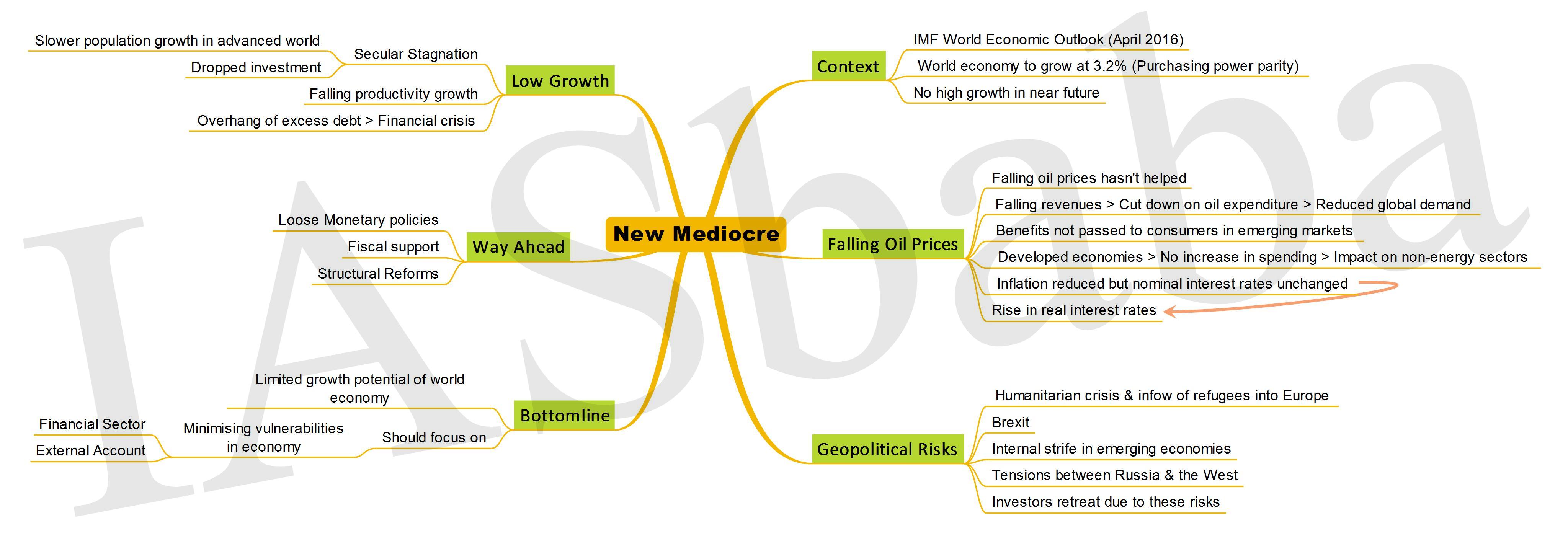IASbaba's Daily Current Affairs Analysis, IASbaba's Daily Current Affairs April 2016, National, UPSC
Archives
IASbaba’s Daily Current Affairs – 20th April, 2016
NATIONAL
TOPIC: General Studies 2:
- Government policies and interventions for development in various sectors and issues arising out of their design and implementation.
- Issues relating to development and management of Social Sector/Services relating to Health, Education, Human Resources
India’s Drug Control—Approvals & DPCO
The ban of 344 fixed-dose combinations-
- FDCs is a combination of existing drugs into one potent formulation
- Helps to increase patient compliance with taking medication —
- Many FDCs in the Indian market are fuelled primarily by the desire to evade the Drug Price Control Order (DPCO)
Need to crack down—
- Lacks basic medical rationale
- Being marketed without any supporting clinical evidence
Therefore, notification of bans on certain FDCs—
The pharmaceutical industry took the government into a never-ending abyss of litigation—interim stays and longwinded hearings during which the industry continues to distribute its existing stock by peddling the poison to the citizens of this country
The Approval—
- Before a drug is approved, it is required to be supported by clinical trials conducted by independent medical experts – present ban leads one to believe then that there was no evidence to vouch for their safety in the first place
- FDCs and other drug approvals in India have been plagued with irregularities which the government has refused to investigate even after being hauled up by the parliamentary standing committee on health
- 59th report of the committee (2012)- had discovered a shocking collusion between the drug regulator, the industry, and medical doctors in the approval of a set of drugs: buclizine, letrozole, an FDC of flupenthixol and melitracen (Deanxit), and an FDC of aceclofenac and drotaverine
- Noted that most of these drugs had received approval in the Indian market despite the fact that advanced jurisdictions such as the US and the EU refused similar approvals.
- When the standing committee sought the files from the DCGIs to understand the basis on which these approvals had been granted, the Government simply didn’t cooperate.
“The Committee is of the opinion that there must be some very good reasons for Danish Medicine Agency (Denmark) not to approve a domestically developed drug where an anti-depressant drug would perhaps be in greater demand as compared to India. Curiously, Deanxit is allowed to be produced and exported but not allowed to be used in Denmark.”
The ever-existing Racket
Nature of the approvals—
“There is sufficient evidence on record to conclude that there is collusive nexus between drug manufacturers, some functionaries of CDSCO and some medical experts.”
- The committee demanded the Ministry of Health and Family Welfare investigate the manner in which these approvals were granted because there was prima facie evidence of wrongdoing in granting these approvals
- The ministry set up an expert committee under VM Katoch to study the committee’s report – agreed with the recommendation of an investigation into the shady approvals
- December 28, 2012— , Submission of an ‘action taken report’ to the standing committee promising an investigation into the manner in which these approvals were granted
- No action was taken and in the 66th report tabled in Parliament on April 26, 2013, the committee noted its shock at the inaction of the ministry
- Buclizine approval: “The Committee takes serious umbrage over these more than apparent dilatory tactics being adopted by the Ministry to somehow delay action against the wrongdoers.”
- Approval of letrozole: “The Committee finds it deeply perturbing as to why the Ministry has failed to take action in this very open and shut case of impropriety and criminal lapse. Though more than six months have elapsed, the Committee strongly feels that if perpetrators of such illegalities and collusive acts which are detrimental to public health are allowed to go scot-free, then the total collapse of an ethical health care system is inevitable.”
- Approval of Deanxit: “If any drug is promoted for unapproved indications, DCGI has the statutory duty to take action and even cancel marketing approval. The Committee is aghast that no action was taken against the Danish manufacturer, Lundbeck even when it was openly flouting Indian laws. Compare the lack of action in India with the United States where for a similar offence Pfizer had to shell out Rs. 2,300 crores for promoting gabapentin for an unapproved indication.”
Indian drug control system (weakest at present) — Present government is taking various steps to
- Strengthen the quality mechanism
- Increase the awareness that all (companies) should move towards high quality parameters
- Increasing the number of drug inspectors
- Increasing the drug controller staff
- Banned 344 fixed drug combinations (FDCs), after an expert panel found that these drugs lacked therapeutic justification and posed various health risks
Way Ahead:
- Urgent need for an investigation into how approvals for these FDCs and the drugs mentioned by the standing committee were granted in the first place (corruption/incompetence)
- To ensure fairness or independence, it cannot be conducted under the aegis of the ministry of health and therefore, the requirement of an independent commission headed by a senior advocate of the Supreme Court to investigate this matter
- The mere number of 15% products approved and certified by World Health Organization needs to move up to 50%
- Efforts need to be made to revive public sector undertakings (PSUs) of the sector and ensure ‘a continuous monitoring’ mechanism
Connecting the Dots:
- What are the major constraints looming over the advancement of the Indian Pharma Sector? Suggest some measures
- Is there a need for the establishment of a new Ministry for pharmaceuticals and medical devices? Discuss.
Also Read:
Pharmaceutical Sector: India’s Drug Policy
Drug Pricing: Critical Illness—A Gold mine
NATIONAL
TOPIC: General Studies 2:
- Important aspects of governance, transparency and accountability, e-governance- applications, models, successes, limitations, and potential; Government policies and interventions for development in various sectors and issues arising out of their design and implementation.
Cities at Crossroads: Setting cities free
Background:
- To have Indian cities with reasonable quality of life for their residents and a better investment climate for investors, it will require massive investments in urban infrastructure. Lack of funding is usually perceived to be the principal constraint in achieving this objective.
- Fundamental reform in the institutions that govern the planning and management of cities is the need of the hour to have to well-designed and well-managed infrastructure and improvement in public service delivery with efficient usage of available funds.
- Alongside Amrut and the Smart Cities Mission, we need to urgently spell out the dimensions of institutional reform
What does smart city mean?
- Smart Cities focus on their most pressing needs and on the greatest opportunities to improve lives.
- They tap a range of approaches – digital and information technologies, urban planning best practices, public-private partnerships, and policy change – to make a difference. They always put people first.
Objective:
- Is to promote cities that provide core infrastructure and give a decent quality of life to its citizens, a clean and sustainable environment and application of ‘Smart’ Solutions.
Focus:
- Is on sustainable and inclusive development and the idea is to look at compact areas, create a replicable model which will act like a light house to other aspiring cities.
Initiatives to strengthen cities:
AMRUT: Atal Mission for Rejuvenation and Urban Transformation (AMRUT)
- It is an urban transformation scheme with the focus of the urban renewal projects to establish infrastructure that could ensure adequate robust sewerage networks and water supply.
Providing basic services such as water supply, sewerage, urban transport to households and build amenities in cities which will improve the quality of life for all, especially the poor and the disadvantaged is a national priority. - AMRUT is actually a new avatar of the existing JNNURM and will extend support to till 2017 to those projects that are at least 50% complete under the earlier JNNURM.
Smart cities scheme:
- The Smart Cities Mission will focus on developing 100 select Smart cities by focusing on optimizing efficiencies in urban services and infrastructure management, with proactive use of technology and people participation.
- The Mission will support each selected city with Rs 100 crore per year, for a period of five years.
Bottle necks:
- It is now almost 25 years since the 74th constitutional amendment mandated that state governments transfer to the local governments a set of specified functions.
- The unwillingness of the system to devolve responsibility and funding to the city level is a major failure.
Need of the hour: Reforms
Ability to finance large investments:
- Reform in the form of setting user charges for the delivery of a public service to cover at least the operation and maintenance cost of the infrastructure asset, including debt servicing, would yield a revenue model that assures repayment of the loans raised from the capital market .
- If equity is brought in by a private partner in a public-private partnership project, then the user charge must cover a return on such investment.
- State government must provide approval to city governments to raise user charges while protecting the poorest by cross-subsidizing
Urban Planning:
- Reform of assigning to urban local governments the function of urban planning, including town planning, would provide them with the opportunity of activating a market for land use change.
- This would help them to unlock land value as they go about the business of land zoning and appropriating a part of the consequent appreciation in the value of land for financing urban infrastructure.
Efficient Public service delivery:
- The report of the high powered expert committee on urban infrastructure and services (HPEC 2011) had recommended administrative and institutional reforms designed to overhaul the system.
- For example: A unified command under an empowered and accountable mayor, a municipal regulator for bringing a degree of professionalism in the pricing of urban services, and use of e-governance and e-enabled smart technologies for better efficiency.
Strengthening grievance redressal:
- Successful attempts at e-governance in cities such as Hyderabad, Bangalore, Pimpri-Chinchwad and Surat are helping to create an environment for grievance redressal and better service delivery.
- Lack of funding and capacities are acting as bottle necks in other cities to have e-governance and better grievance redressal.
Omission of vital function:
- The unwillingness of the system to devolve responsibility and funding to the city level is a major failure.
- Many functions have been devolved but major omission has been that of urban planning, including town planning which has been retained by most state governments.
- It is now almost 25 years since the 74th constitutional amendment mandated that state governments transfer to the local governments a set of specified functions. Vital reform would be to engage city government urban planning in general, town planning in particular.
Share of revenue:
- The share of municipal town revenues in their total revenue was at a low of 53 per cent in 2007-08 and declined further to 51 per cent in 2012-13.
- As of now, property tax is a major source of revenue for these governments, but both the rates and exemptions are set by the state government.
- State governments to set up state finance commissions that would spell out the principles for sharing a part of the revenue of the state government have not followed the high standards set by the Central Finance Commission and they have not been able to challenge state-level political resistance to devolving funds to urban local governments.
Way ahead:
Municipal Finance List
- One way of reducing dependence on the state government for discretionary funds would be to create a Municipal Finance List in the Constitution that should specify taxes that are exclusively in the domain of local governments.
GST: Goods and Services Tax
- Opportunity provided by the GST, which is the most efficient tax (because it does not cascade and its destination principle promotes India as a common market), should be used to constitutionally ensure that state governments share a pre-specified percentage of their revenue from GST with local governments.
- GST would remain two-tiered but the revenue allocation would be three-tiered.
- Guaranteed devolution of GST will significantly reduce uncertainty in the finances of urban local governments and provide them with a basic cushion of financing to discharge their constitutionally assigned responsibilities
Connecting the dots:
- Smart cities require smart way of financing. Comment.
- Throw light on what are the bottle necks in urban planning and how to empower Municipalities to play vital role in the effective urban planning to make urban living a sustainable living.
Also Read:
MUST READ
Battle for Bangladesh’s soul
The splinternet is here
Should the CRR be abolished?- The RBI’s reluctance to cut rates should be seen as a case of inability in the face of inflation, while the refusal of banks to cut rates is a case of unwillingness to reconcile to a lower profit margin
Holds no water- Rational pricing of water for irrigation, not banning new sugar mills, is what Marathwada needs.
Universal wage error- Labour ministry making it harder to do business
The Indo-US military alliance that isn’t-The debate on foundational agreements is riddled with superfluous issues
Related Articles:
India- US relationship- a Strategic Imperative
The jobs discourse- We need to re-energize the jobs discourse, how about a slogan like ‘More jobs per crore of investment’?
Fixing educational policy’s failure-Reforms in pedagogy and school governance structures are critical for addressing India’s learning crisis
Related Articles:
http://iasbaba.com/2015/08/iasbabas-daily-current-affairs-13th-august-2015/
http://iasbaba.com/2015/09/iasbabas-daily-current-affairs-12th-september-2015/
http://iasbaba.com/2015/08/iasbabas-daily-current-affairs-4th-august-2015/
http://iasbaba.com/2015/10/iasbabas-daily-current-affairs-16th-october-2015/
Community land reserves and affordable housing in India-We need a different strategy if we are to provide affordable housing for the poor well into the future
MIND MAPS
1. New Mediocre












